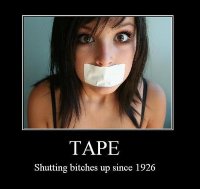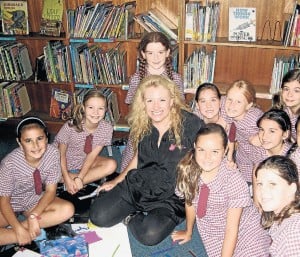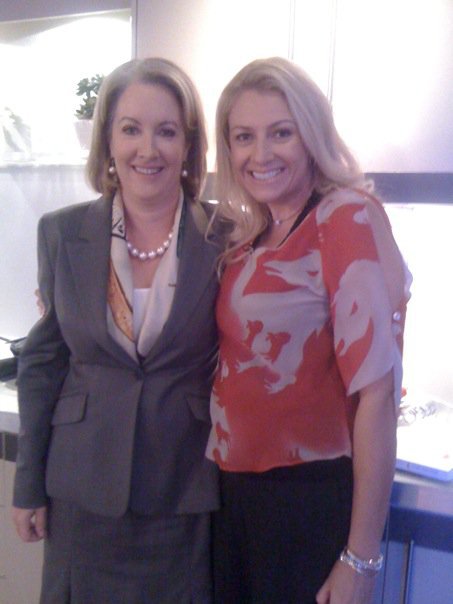On Thursday last week I attended the Sydney launch of Big Porn Inc, Exposing the Harms of the Global Porn Industry. This important collection of essays by leading experts and activists is edited by Melinda Tankard Reist and Abigail Bray. The talks given, particularly by Ms Bray, were deeply moving and the personal toll that contributing to this book has taken on the writers was visibly apparent; what brave women they are to delve into the darkness so that we may see the light. Inspired by the contributors’ resolve, I committed to reading this book over the weekend and whilst I cannot say I enjoyed it, for it is (in parts) absolutely harrowing, I did find it deeply thought provoking. Works like this, which dare to challenge the rhetoric of porn as liberation or nothing more than a bit of fun, have the potential to help us reclaim and reshape our sexuality – which has unarguably been hijaked by an industry that increasingly views woman as nothing more objects to be used and abused for sexual gratification.

This week I wish to share with you an edited version of the chapter contributed by Nina Funnell. Nina is a sexual ethics writer, author and women’s rights advocate. She was awarded the Australian Human Rights Commission Community (Individual) Award in 2010 for this work.
Sexting and Peer-to-Peer Porn
Historically debates about children and pornography have tended to play out in two directions. Either children are discussed as being the victims used in illegal child pornography, or alternatively they are constructed as the damaged consumers of adult pornography which they inadvertently or deliberately access.
Both the “exploited victim” and “damaged consumer” approaches have produced a wealth of research that has contributed to public debates about pornography.
However, while these approaches have offered certain frameworks for understanding and discussing the harm caused to children, they have not been able to account for a recently emerging trend whereby young people are not merely accessing and consuming pornography, but indeed are now the active producers of pornography – specifically child pornography.
In recent years academics have been tending to the ways in which young people are incorporating technology into their dating, courtship and sexual socialisation practices. While many young people report that technology has enhanced their social lives, others have expressed concerns over the ways in which technology (such as digital photography, mobile phone cameras and webcams) has contributed to a paradigm where privacy is compromised.
The ease with which photos are now produced, the speed at which they travel, combined with the permanence of those photos once online has meant that young people’s private lives are now being shared and recorded in ways never seen or imagined before.
The advent of the smart-phone which allows users to access the World Wide Web directly from their personal phones also means that young people are now able to upload and retrieve digital information from anywhere and at anytime, with few time-delay barriers that might otherwise give an opportunity for reflective thought.
Of particular concern is the ways in which young people are now uploading sexualised personal content which is then immediately available for by peers and others. According to one study completed by the National Campaign to Prevent Teen and Unplanned Pregnancy in America, as many as one in five teenagers has electronically sent a nude or semi-nude image or video of themselves. This statistic, which has been widely reproduced in media articles, has alarmed parents and children’s rights groups everywhere.
Blended with the concern that young people may be jeopardising their reputations and employment prospects is the fear that such photos could fall into the hands of paedophiles as once those photos are online it is virtually impossible to control how they circulate or where they end up.
But beyond personal safety fears, there are additional concerns regarding the legal risks that children and teenagers face.
In 2009 three teenage girls in Greensburg Pennsylvania took nude and semi-nude photos of themselves on their mobile phones before sending those photos on to three boys. When the images were discovered on the boys’ phones, the girls (for photographing their own bodies) were threatened with charges relating to the production and distribution of child pornography, and the three boys were threatened with charges relating to the possession of child pornography.
In the media commentary that followed, a debate erupted over the definition of child pornography and the application of the law in cases involving teens who willingly photograph their own bodies.
On the one hand, some claimed that prosecution was an appropriate response that would serve to deter other teenagers from engaging in a behaviour now known as “sexting” (that is, the production and distribution of sexualised personal photos via mobile phone or online).
But there are other questions that should be raised Why, for example, are laws which were initially intended to protect children now being used to criminalise teenage sexuality? Is it appropriate to group sexually curious teenagers in with convicted paedophiles? How can a girl be both the victim and the perpetrator of the same crime? What possible good can come from labelling these teens as sex offenders and putting them on a sex offender register for the rest of their lives? Shouldn’t we preserve that register for criminals who pose a real threat to society?
Eventually the Pennsylvania case was dismissed after the American Civil Liberties Union launched a countersuit against the District Attorney for threatening to lay the charges against the teenage girls. But the significance of the case is clear: the laws have been utterly outpaced by the speed at which the technology had evolved and are now woefully ill-equipped to respond to the current paradigm.
The case also illuminated one other thing: that at the time when these laws were first developed no-one had comprehended the possibility of kids themselves being the ones producing the pornography.
There is a long history of children expressing curiosity over bodies and sex and there is nothing inherently wrong or unnatural about this. However when images are taken without consent or distributed to third parties without consent, the results can be devastating.
In May 2008 a young woman named Jesse Logan appeared on a Cincinnati television station to tell her story. She had sent nude photos of herself to her boyfriend who sent them on to other classmates when the relationship ended.
Logan was harassed and repeatedly labelled a “slut” and a “whore.” She became depressed, withdrawn and avoided school. Two months after agreeing to talk about her experience on television her body was found hanging in her bedroom. She was only 18.
In 2010, another eighteen-year-old student, Tyler Clementi committed suicide by jumping from the George Washington Bride. Clementi who was not openly gay had recently had a sexual encounter with a man in his dorm room.
His roommate Dharun Ravi and another student had secretly filmed and streamed the footage of the encounter. Clementi’s Facebook status at the time of his death read “jumping off the gw bridge sorry.” His body was found a short time after.
In 2011, another 18 year old female cadet in the Australian Defence Force Academy engaged in consensual sex with a fellow cadet. Unbeknown to her he was secretly filming and live streaming the footage to six other males in an adjacent room.
On learning what had happened the cadet, “Kate” stated that her “whole world came crashing down” and she was physically ill. Despite this, after speaking out she was subjected to more harassment and bullying from fellow cadets.
When all of these stories broke, the public responded with a mix of shock, horror and disgust at the ways the victims had been treated. Adults in particular have scoffed over the actions of the young people involved in these events.
But when we look further afield, the practice of individuals filming or distributing sexually explicit footage of other people without their knowledge or consent has a longer history and one that, in certain spheres, has gone largely uncontested.
Twelve years before the ADFA scandal a teen comedy American Pie (1999) was released. In it the protagonist sets up a webcam to film a female exchange student getting changed. The footage is live streamed to boys in a nearby home.
At no point is there any comment in the movie on the ethics of this behaviour or the likely emotional impact for the girl. In fact in American Pie 2 she returns as a love interest for the protagonist. In other films such as Porkies, Sleepers and The Virgin Suicides, groups of boys perving on women without their consent as a form of male bonding is depicted as normalized behaviour. Of course this isn’t limited to film.
In 2009 a sports reporter named Erin Andrews was filmed nude while alone in her hotel room. The video quickly became one of the most searched Google items. Video-blogging on Feministing, American writer Jessica Valenti, made the following comment:
You know you can see plenty of hot naked ladies on the Internet. It’s not that hard to fine. But folks want to watch this and people are interested in this precisely because Erin Andrews doesn’t know she is being filmed. I think that reveals something incredibly f–ked up about the way American culture views women. That what we consider hot and sexy is looking at naked pictures of women without their consent.
Looking further afield again we can see many other examples where internet users have swarmed to download sex tapes of women which were produced or released without their consent: Paris Hilton, Kendra Wilkinson, Pamela Anderson and Katie Price have all had sex tapes distributed without consent. Many adults have downloaded and watched these films.
It is erroneous to suggest that celebrities or people who work in the public eye do not deserve privacy. Such an argument falls into the trap of suggesting there are two types of women in this world: those you are allowed to abuse and assault, and those who you cannot.
Likewise, it is also problematic to expect teenagers to live up to a higher standard than we set for the rest of society. We need to be consistent in our approach to non-consensual filming and distribution of sexual content.
While digital technology and social media have no doubt enhanced many aspects of our lives, they have also extended the ways in which women and girls can be violated, humiliated and abused.
To deal with this will require more than mere education for young people about the risks associated with technology. It will require us to teach them techno and sexual ethics and it will require us, as adults, to also abide by the standards we set for them.
To do this, we need to acknowledge and redress the misogyny, sexism and deep degradation that underscores so much of our current culture.










